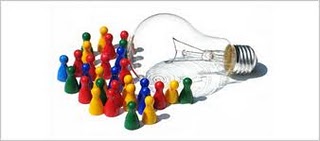Great. You decided to get your company's logo professionally designed. So how do you know you've gotten what you are paying for, what should you expect?

There are as many definitions of "design" and "designer" as there are people pondering the concept. Design - as in all art - is in the eye of the beholder. One definition that many might agree on is that graphic design is a creative process undertaken to convey a message to a specific audience. That definition is a good one because it conveys that design is collaborative and it is a process.
So the first thing you should expect from your designer is
some method of sharing and discussing your company
, your products, your philosophy, your persona and your likes and dislikes on things as basic as color and type style. This may take the form of a conversation or two, some written questions provided as a way to promote new lines of thinking. If you own Compass Services, it might seem like a "no-brainer" to make some compass illustration your logo. But an experienced designer will dig deeper with you and you may end up somewhere that wasn't on your horizon when you started out.
Once the designer has more information, they have to
translate that into ideas
. Ideas are rough - often unformed. Because people tend to get caught up on color and typeface, these first passes may be nothing more than conceptual pencil sketches. Any good designer should give you some choices. Walk away from any designer who can only give you one "choice" and is looking for a quick approval.
Once you've settled on a concept, the designer will
refine the design.
This is fairly important as it involves
deciding on a color palette
. This color palette should impact every other area of your public persona - website, brochures, business cards, trucks, etc - so it's important. Imagine if Coca-Cola founder John Pemberton had said, "You know, I really don't like the red." Ideas about appropriate colors should already be forming - from your design concept discussions, from your business, from your products. But if nothing trips your trigger on the first pass, most designers will create more choices.
This is where we get into the issue of
deliverables
. Once all is said and done, what should you get an how do you use it?
- Your designer should provide a logo in several different formats that you can use in different types of applications. At minimum you must get a vector file (.eps). This file is not an image but a data file and can be scaled up to a billboard or down to an icon without losing any detail. It is the .eps file that you will need for any high-quality printing, for clothing, for printing premium items like mugs or clothing. Printers may tell you that they can take your .jpg (j-peg) file, which is really a static image of your logo, but they will then charge you a design or set up fee to basically turn your .jpg into their interpretation of your logo as a .eps file. Since they don't know your fonts or color palette, this may be inconsistent with your approved logo. You can get a feeling for the difference between a jpg and eps file by putting any jpg image into a word processing document. Now select the image and drag it until it fills the page. You will see it lose quality.
- There are many areas where you can get away with a .jpg (such as online uses including digital stationary, email, and websites). If you want to have color backgrounds, you'll need a transparent logo in a .png format. This should be SOP for any designer.
- Color palette. At minimum, you ought to know what colors are actually used in your logo and what typeface and styles are in use. A more detailed "branding book" or "identity guide" may be an option with your designer and may be worth having. But there are many times that know what your actual colors are and what ink settings are required to reproduce them can be very important.
So, how much does all this cost? That is going to vary widely. But most designers will have a pricing level with minimal changes and, at the higher end, a level that includes unlimited changes. Make sure you honestly assess if you are a tweaker or not. Be honest; deceiving yourself can be costly when your designer starts piling on extra charges.
------
NEXT: Icons and favicons, oh my! Deconstructing the language of design.
